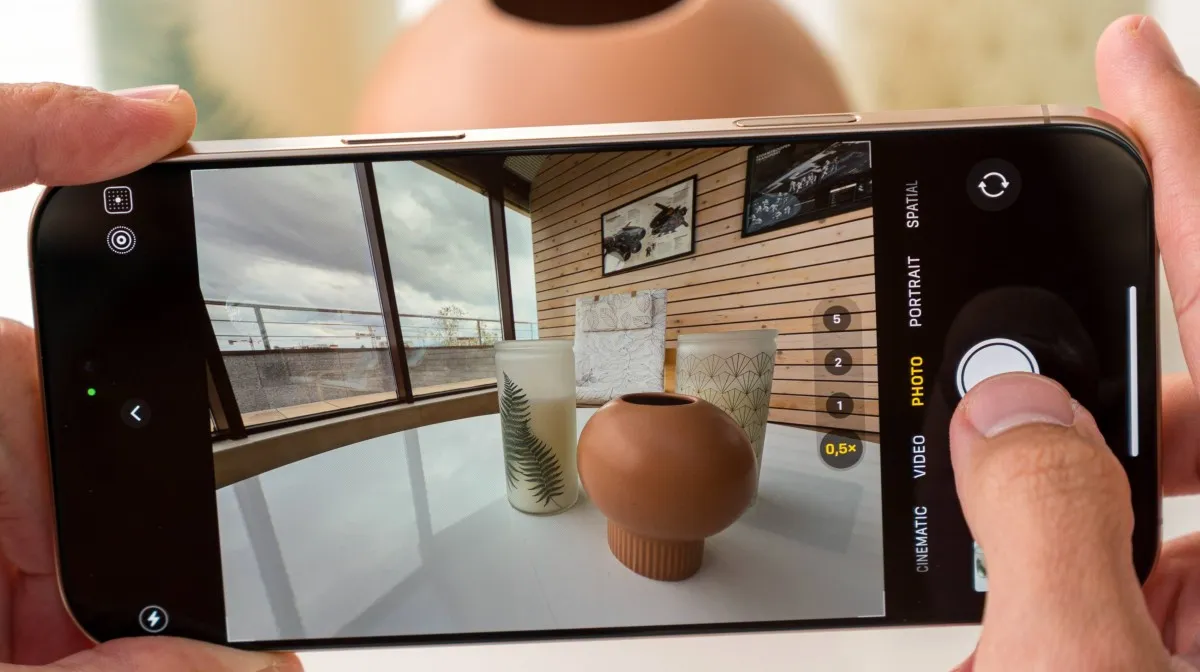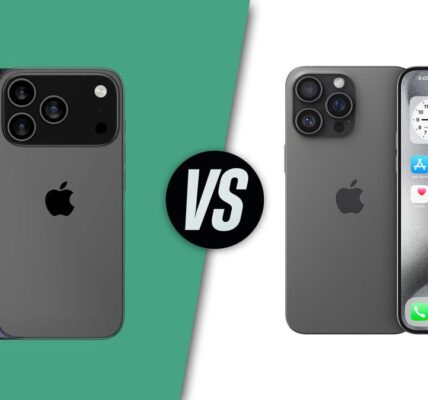When it comes to smartphones, the camera is often one of the most talked-about features. With the launch of the iPhone 17, Apple has once again raised the bar for smartphone photography. But how does the new iPhone compare to the iPhone 16, which also packed a powerful camera system? In this detailed comparison, we’ll put both the iPhone 16 and iPhone 17 to the test, focusing on the key features and performance of their cameras.
Introduction to the iPhone Camera Battle
Smartphone cameras have evolved rapidly over the years. The iPhone 16 set the standard with its impressive triple-lens system and advanced software features. However, the iPhone 17 has taken it a step further with its quad-lens system and 200MP sensor, making it the most advanced iPhone camera to date.
But is the iPhone 17 worth the upgrade, especially when it comes to the camera? Let’s dive deep into the camera features of both models and see which one comes out on top.
1. Overview of iPhone 16 Camera Features
Camera Setup and Sensor Technology
The iPhone 16 boasts a triple-camera setup that includes a wide, ultra-wide, and telephoto lens, offering versatile shooting options for everyday photography. The 12MP wide sensor and 12MP ultra-wide sensor capture sharp and detailed images, while the telephoto lens allows for 2.5x optical zoom.
Key Features of the iPhone 16 Camera
-
Night Mode: Improved low-light performance.
-
Deep Fusion: Enhances details in medium to low-light situations.
-
Smart HDR 4: Brings out more vibrant colors and better highlights.
Image Quality and Performance
The iPhone 16 camera delivers excellent image quality in a variety of settings. Daylight shots are sharp, while low-light performance is good but not as impressive as the iPhone 17.
2. The iPhone 17: What’s New in the Camera Department?
The Revolutionary 200MP Sensor
One of the most significant upgrades in the iPhone 17 camera is the 200MP main sensor. This massive sensor provides more detail, better color reproduction, and improved dynamic range, allowing for superior image quality in both bright and low-light conditions.
Quad Lens Setup: More Power, More Precision
The iPhone 17 comes equipped with four lenses:
-
Wide (200MP)
-
Ultra-Wide (12MP)
-
Telephoto (10x optical zoom)
-
LiDAR sensor for enhanced depth sensing and autofocus in low light.
Night Mode and Low-Light Performance
With improved Night Mode, the iPhone 17 captures brighter and more detailed images in extremely low light. The faster sensor and advanced AI processing work together to reduce noise and enhance color accuracy.
3. Key Differences Between iPhone 16 and iPhone 17 Camera
Sensor Size and Megapixels
The iPhone 16 camera features a 12MP main sensor, while the iPhone 17 comes with a 200MP sensor. This allows the iPhone 17 to capture far more detail, especially in challenging lighting conditions.
Zoom and Optical Features
The iPhone 16 has a 2.5x optical zoom and a digital zoom up to 10x. In comparison, the iPhone 17 offers 10x optical zoom with much sharper results at longer distances.
Software and AI Enhancements
The iPhone 17 benefits from advanced AI-based processing, improving features like Smart HDR, portrait lighting, and focus adjustments.
4. Camera Comparison: Daylight Performance
Color Accuracy and Dynamic Range
Both phones produce accurate colors and vibrant images. However, the iPhone 17 handles highlights and shadows better, offering a wider dynamic range. Images appear more natural and balanced, with less overexposure.
Clarity and Sharpness
The iPhone 17’s 200MP sensor ensures extremely sharp details, especially in landscapes and fine textures. The iPhone 16 still performs well, but the clarity of the iPhone 17 is noticeably superior.
5. Camera Comparison: Low-Light Performance
Night Mode and Long Exposure Time
Both phones perform admirably in low-light settings, but the iPhone 17 takes the lead. Its larger sensor and improved Night Mode deliver much better results in very dark environments.
ISO and Noise Reduction
The iPhone 17 is equipped with advanced noise reduction algorithms that make low-light images clearer, with much less grain compared to the iPhone 16.
6. Portrait Mode Comparison
Depth of Field and Bokeh Effects
The iPhone 17’s depth of field is enhanced with the LiDAR sensor, making its portrait shots look more professional. The background blur (bokeh effect) is more pronounced, providing better subject isolation.
Edge Detection and Subject Isolation
The edge detection on both phones is impressive, but the iPhone 17 does a better job at keeping the subject in focus while blurring the background.
7. Video Capabilities: iPhone 16 vs iPhone 17
4K Video Recording: What’s Changed?
Both phones record in 4K at 60fps, but the iPhone 17’s video stabilization is smoother, even in low light. The added AI-driven autofocus makes videos appear more cinematic.
Cinematic Mode Enhancements
The iPhone 17 introduces real-time focus adjustments in Cinematic Mode, making videos even more dynamic and engaging.
8. Selfie Camera Performance
Selfie Quality: iPhone 16 vs iPhone 17
Both phones offer a 12MP front camera, but the iPhone 17 brings improvements in low-light selfies, better HDR, and enhanced beauty filters.
AI and Beauty Mode Features
The AI improvements in the iPhone 17 enable more natural-looking beauty enhancements, avoiding the over-smoothed effects sometimes seen in the iPhone 16.
9. The Impact of Software Updates on Camera Performance
iOS 16 vs iOS 17 for Photography
The iPhone 17 benefits from the new iOS 17, which includes AI-powered photo editing tools, better integration of third-party apps, and more control over image processing.
AI-Driven Enhancements: Which Performs Better?
While iOS 16 offers robust features, iOS 17 pushes the limits with dynamic scene recognition, enhanced night mode, and faster processing times.
10. Real-World Testing: iPhone 16 vs iPhone 17 Camera in Action
Professional Photography Test
In professional settings, the iPhone 17 shines with its 200MP sensor and advanced AI processing, making it a top choice for photographers who want more than just casual snapshots.
Everyday Use and Casual Shots
For everyday use, both the iPhone 16 and iPhone 17 are great. However, the iPhone 17 gives you more versatility with its zoom capabilities and AI enhancements.
11. Price vs Performance: Is the iPhone 17 Camera Worth the Extra Cost?
What You Get for Your Money
When you’re shelling out over a thousand dollars for a smartphone, it’s only natural to want to know what you’re getting for your money, especially when it comes to camera performance. The iPhone 17 is priced higher than the iPhone 16, but its camera upgrades, along with performance enhancements in other areas, could be worth the investment—particularly if you’re someone who takes a lot of photos or shoots video regularly.
Apple has focused on delivering a professional-grade photography experience with the iPhone 17, especially in low-light environments, zoom, and video quality. You’re not just paying for the 48MP main sensor or the impressive AI features—you’re also investing in the ProRes video, improved stabilization, and larger zoom ranges. All of these upgrades combine to create an experience that’s closer to DSLR-level photography, making the iPhone 17 a solid choice for enthusiasts and professionals alike.
Is the Upgrade Worth It for Photographers?
If you’re a photographer or content creator, the iPhone 17’s camera upgrades are definitely worth considering. Here’s why:
a. 200MP Sensor for Incredible Detail
The most noticeable upgrade is the 200MP sensor in the iPhone 17. This leap from the 12MP sensor in the iPhone 16 brings a whole new level of detail and clarity to your images. Whether you’re shooting landscapes, portraits, or urban photography, the ability to capture intricate textures and fine details will allow you to crop, zoom, and edit photos with much more flexibility.
The larger sensor size also means that the dynamic range of your photos is significantly improved. Bright highlights and deep shadows are now captured with more accuracy, giving your shots a more professional look without needing heavy post-editing.
b. 10x Optical Zoom for Versatile Framing
Zooming in on subjects often leads to a loss of clarity, especially in smartphones. The iPhone 17 offers a 10x optical zoom (compared to just 2x in the iPhone 16), which dramatically improves your ability to get closer to the action without sacrificing quality. This is a game-changer for wildlife photographers, event shooters, and anyone who needs to take close-up shots from a distance.
With the iPhone 17, you won’t have to worry about pixelated or blurry images when zooming in. The optical zoom ensures that your photos retain their sharpness, even at high magnifications.
c. Advanced Night Mode and AI Enhancements
Low-light photography has always been a challenge for smartphone cameras. The iPhone 16’s Night Mode was already good, but the iPhone 17 takes it to the next level. Thanks to its larger sensor and AI-driven enhancements, the iPhone 17 captures more natural, less noisy images in darker settings. Whether you’re shooting under streetlights, in dimly lit rooms, or at night, the iPhone 17 excels at maintaining color accuracy and detail, making it a much better choice for night photographers or event videographers.
d. Cinematic Mode: Professional Video Quality
Content creators who are looking to produce high-quality video will find the iPhone 17 to be an invaluable tool. With the Cinematic Mode, the iPhone 17 brings a movie-like experience to smartphone video, including improved focus transitions and better depth control. The ability to focus on subjects and blur out backgrounds with precision is an incredibly useful feature for anyone creating professional-looking content.
Additionally, the introduction of ProRes video in the iPhone 17 means that you can now capture RAW video without worrying about compression or quality loss, giving you more room to edit and refine your shots.
e. Enhanced Editing Capabilities
The iPhone 17 doesn’t just improve its photography and video capture; it also provides better editing tools right on the device. Whether you want to adjust the brightness, tweak contrast, or enhance details, the upgraded A19 Bionic chip gives you more control over the final output. For photographers who prefer working on the go, the iPhone 17 offers a complete mobile editing suite, allowing you to fine-tune your images and videos with precision.
f. AI Features to Improve Your Workflow
Another feature that stands out is the AI-driven enhancements that make the iPhone 17 smarter. The camera learns your shooting style and adjusts automatically to give you the best result every time. Smart HDR 4 and Deep Fusion process images on the fly, improving exposure, skin tones, and fine details.
For a photographer, these automatic tweaks reduce the need for manual adjustments, letting you focus on composition instead of technical settings.
Still Worth the Investment?

For serious photographers, the iPhone 17 offers significant upgrades over the iPhone 16, making it a worthwhile investment. The 200MP sensor, 10x optical zoom, advanced low-light performance, and Cinematic Mode make it a powerful tool for both photo and video creation. Whether you’re a professional or an enthusiastic hobbyist, the iPhone 17 will likely exceed your expectations.
If you primarily use your phone for casual snapshots or social media content, the iPhone 16 is still a fantastic choice with great camera performance. But if you need cutting-edge features and superior quality, especially in the zoom and video department, then the iPhone 17 is a worthy upgrade.
12. Conclusion: Which iPhone Has the Best Camera?
Final Verdict
Both the iPhone 16 and iPhone 17 offer fantastic camera systems, but the iPhone 17 truly stands out with its next-gen features. If you’re a photography enthusiast or need the best smartphone camera for professional use, the iPhone 17 is the obvious choice.
Read Also 8 Hidden iPhone 17 Secrets Apple Doesn’t Want You to Know — #1 Is Mind-Blowing!
FAQs
1. How much better is the iPhone 17 camera than the iPhone 16?
The iPhone 17 offers a 200MP sensor and 10x optical zoom, providing more detail and better performance, especially in low light.
2. Does the iPhone 17 camera perform better in low-light conditions?
Yes, the iPhone 17 has a larger sensor and improved Night Mode, giving it better low-light performance.
3. What is the main difference in zoom capabilities between the two phones?
The iPhone 17 offers 10x optical zoom, while the iPhone 16 is limited to 2.5x optical zoom.
4. Is the iPhone 17 camera worth upgrading for professional photographers?
Yes, the iPhone 17’s 200MP sensor, LiDAR technology, and 10x zoom make it ideal for professional photographers.
5. Can the iPhone 17 replace a DSLR camera for casual photographers?
For casual photographers, the iPhone 17’s advanced camera comes close, but it may not fully replace a DSLR for professional-grade images.




